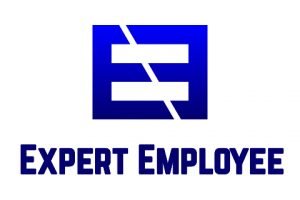This post contains affiliate links.
The modern career path is no longer linear – it’s increasingly a winding journey of transitions, pivots and reinventions. People change jobs and careers more frequently than ever before due to factors like industry disruption, shifting personal interests, geographic relocation, or simply seeking a fresh professional challenge.
While career transitions can feel daunting, they also present immense opportunities for growth, fulfillment and impact if approached strategically. In this comprehensive guide, we’ll explore frameworks and actionable strategies for successfully navigating career pivots and purposeful transitions.
Navigating career transitions requires: a growth mindset viewing pivots as opportunities; self-assessment identifying values, strengths and goals; mapping potential paths through research and networking; building needed skills through courses and projects; intentional personal branding and positioning; leverage networks to facilitate opportunities; negotiating pivots strategically; continual re-evaluation with courage to pivot again. With purposeful planning, pivoting allows authentic alignment and growth.
The Transition Mindset
Before we dive into tactics, it’s important to adopt the proper mindset for embracing career changes rather than fearing them. A few principles:
- See Transitions as Gateways, Not Permanent Decisions
Too often we put unnecessary pressure to find the “perfect” next role or to have our entire future mapped out. Approach pivots as temporary gateways opening new doors of possibility. - Appreciate the Journey
Growth, learnings, skills and relationships accumulated along your journey are invaluable assets to carry forward rather than being “starting over.” - Honor Seasons of Life
Our interests, priorities and values naturally evolve over time. What fulfilled you a decade ago may feel misaligned now – that’s OK! Celebrate progression. - Focus on Alignment over Achievement
More important than titles or accomplishments is finding work that aligns with your authentic talents, values and sources of meaning. - Anchor Identity in Transferable Skills
Rather than defining yourself by a single job or credential, anchor your identity in durable capabilities you can apply across contexts.
Mindset is crucial as it’s what gives you confidence to lean into transition as a pathway for greater purpose and impact rather than from a scarcity mentality.

The Career Pivot Process
While each transition journey will look unique, there is a general pivot process to follow for smoother, more strategic shifts:
1. Self-Assessment and Insight-Gathering
Before you start pivoting, you need a clear-eyed look inward at your values, interests, strengths and motivations. Reflection questions:
- What energizes and fulfills you? What drains you?
- What are your superpowers and most durable transferable skills?
- How does your work need to align with your life’s purpose?
- What cultures, environments and types of work allow you to thrive?
Tools like journaling, assessments, working with a coach, or talking to mentors can clarify insights about your “core drivers and motivations.”
2. Ideation and Opportunity Mapping
With clear self-insight, you can start ideating paths and opportunities aligned with your goals. Tactics:
- Identify industries, roles, companies or geographic hubs that excite you
- Analyze growth areas ripe for people with your transferable skills
- Use job postings to reverse engineer skill/experience requirements
- Map possible transition paths, interim steps, gaps to fill, and resources needed
- Reach out for informational interviews to learn more about your options
The goal is to generate a range of potential opportunity spaces to explore in-depth.
3. Skill-Building and Positioning
Most pivots require at least some skill expansion or repositioning of your experience and expertise. Activities:
- Enroll in courses, certifications or training programs
- Find projects, freelancing gigs or volunteer roles to build practical experience
- Update your resume, portfolio and professional branding materials
- Refresh your professional online presence and social selling efforts
- Practice articulating your value proposition for target roles
4. Networking and Opportunity Pursuit
With gaps filled and skills refreshed, you can now actively pursue and facilitate transition opportunities:
- Strengthen relevant network connections in your target domains
- Monitor and apply to suitable job openings or project opportunities
- Reach out to companies/hiring managers directly about potential fits
- Consider strategies like consulting first as an “audition” at a company
- Tap your network for introductions, references and insider knowledge
This is the active “hustling” stage of materializing and landing opportunities.
5. Negotiating and Transitioning
Once you receive offers, it’s crucial to evaluate them holistically and negotiate details:
- Compensation, benefits, bonuses, equity, etc.
- Responsibilities and alignment with excites you about the role
- Company culture, leadership, growth potential, mission
- Logistical factors like commute, relocation, travel, work arrangements
With clarity, you can make an informed decision and establish a transition plan to onboard smoothly.
6. Continual Evaluation and Course-Correction
Even with the best laid plans, pivots rarely go 100% as expected. Reserve flexibility to re-evaluate:
- If a path feels misaligned, have the courage to pivot again
- Seek mentorship to accelerate your growth in the new context
- Identify further upskilling needs as you gain more experience in your pivot
Few pivots are permanent and evolution is inevitable, so embrace pivoting again!
Making Career Pivots is a Cultivated Capability
The best professionals aren’t defined by a single identity or static career – they continually reinvent themselves aligned with their evolving ambitions and potential.
By embodying the transition mindset and equipping yourself with the pivot process above, you’ll gain the confidence and skills to navigate career changes proactively rather than reactively. With intentionality and strategy, you can shape your professional journey to continually challenge yourself, expand your impact, and lean into personal and career growth.
Laying the Groundwork for Successful Transitions
While pivoting careers can seem like an intimidating process, there are preparatory steps you can take well in advance to increase your transition readiness:
- Continual Skill Development & Learning
Resist becoming stagnant. Always be expanding your capabilities through courses, training, experiential projects and reading to stay relevant. - Lifestyle Asset Building
Minimize lifestyle inflation by living below your means, reducing expenses and accruing financial assets that allow you to take calculated career risks. - Cultivating Transferable Expertise
Intentionally develop capabilities that translate across roles, industries or geographies rather than specialized vertical skills with limited applicability. - Building a Diverse Network
An expansive network of connections across sectors fuels learning, uncovers opportunities and facilitates smoother career transitions. - Developing an Independent Brand
Whether blogging, podcasting, public speaking, freelancing, etc. – building an independent skill-based brand that “travels” with you provides leverage in career shifts.
By weaving these into your ongoing personal and professional development practices, you’ll build valuable safety nets that de-risk pivoting whenever the timing arises.

Embracing the Era of “Multivitaminships”
Historically, careers were equated to singular roles or linear trajectories with employers, codified in job titles like “accountant” or “marketing manager.” However, this rigid model is eroding in favor of what Deloitte terms “multivitaminships” – a more fluid, dynamic approach where professionals embody:
- A portfolio of diverse skills, credentials and capabilities
- A variety of concurrent income streams across multiple interest domains
- Continual learning and capability reinvention
- Independence and entrepreneurial self-reliance
- Expanded definition of “career” encompassing various projects, roles and impact areas simultaneously
As AI and automation present challenges to traditional career models, cultivating this “multivitaminship” mindset provides greater agility and resilience to navigate market shifts.
For example, someone could work as a part-time data analyst for a fintech startup while also advising non-profits on data strategy as a consultant while also building an online course teaching SQL and visualizations – spanning multiple roles that collectively constitute their “career portfolio.”
With this multidimensional model, smoother and lower-risk pivots become more feasible. Rather than making an all-or-nothing career transition, professionals can gradually cycle in new income streams or roles while sunsetting others.
The Career Shift Payoff
While career reinvention isn’t without its stresses and challenges, the potential payoff is immense:
- Increased Life Satisfaction and Fulfillment
By aligning your work with personal meaning and purpose, you’ll gain greater motivation, energy, and engagement. - Accelerated Growth
Pivots catalyze rapid new skill acquisition, expanded perspectives, and breakthrough opportunities. - Diversified Security
By creating multiple talent-aligned income streams, you’ll reduce overreliance on any single role or employer. - Unlocking Potential
Transitioning allows you to better maximize your true talents, strengths, and abilities rather than settling. - Creating Impact
With alignment comes the potential to have a greater positive influence and leave a more meaningful legacy.
The alternative – remaining stuck in careers misaligned with who we’ve become – is far more detrimental to our growth, fulfillment, and contributions to society.
So embrace the pivot and view transition not as a risk but as an inevitability to cultivate throughout your professional journey. By intentionally investing in transferable assets and consistently expanding your possibilities, you’ll gain the agility to gracefully reinvent and unlock your greatest potential.
